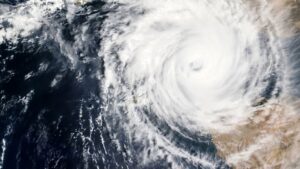 As a nation we’ve been fixated over the last few weeks by several catastrophic hurricanes. For those of us at a distance it seems like an overwhelming human crisis. For those caught up in the center of it, there’s no doubt that it is. But it’s also a business crisis.
As a nation we’ve been fixated over the last few weeks by several catastrophic hurricanes. For those of us at a distance it seems like an overwhelming human crisis. For those caught up in the center of it, there’s no doubt that it is. But it’s also a business crisis.
In Houston, according to GeekWire, major cloud providers like IBM have data centers in the impacted area. Internet backbone company Level 3 also is home to a facility there. Then there are some of the world’s largest oil and gas companies. There are data center operators, like Equinix (also with three facilities in the Miami area) and Data Foundry, co-location providers, and, of course, any other kind of business you can imagine in a large metropolitan area—from healthcare organizations to financial institutions to manufacturers.
Natural disasters are always a wake-up call for business. Today we’re talking hurricanes. In another news cycle it could be fires or earthquakes on the West Coast, or tornados in the Midwest. How prepared are you to help your customers should a natural disaster befall them? Have you thought about how reliably you can step up and respond?
Back in 2013, a story came out about a company called BridgeNet Technology Consultants, which protects clients’ IT networks from cyber threats and data disasters. An insulation products manufacturer reached out to them for help in restoring files only backed up by tape. One night they got a page from the customer letting them know their building had caught fire and consumed the main office and all its equipment—computers, servers, the entire on-premise IT network. Because BridgeNet had insisted that the company use a cloud backup service, Bridgenet was able to restore their data. In less than 24 hours from the time the fire broke out, the company’s accounting system was up and running and processing transactions.
In the midst and aftermath of Hurricane Irma, Miami-based Ryder System Inc. has divided its 400-member IT team in two with half in Miami working remotely and the other half in Michigan, Texas, and other states to help the business continue to serve customers should there be an outage, according to The Wall Street Journal. As a partner to food and beverage companies, auto-parts makers, retailers, and others, Ryder developed an app to monitor news and weather in real time and were able to reroute drivers around disaster areas so deliveries could still be made. Now, that’s a great partner.
Could you do that for a customer? Companies like Microsoft have disaster response systems with their partners. And they collaborate across the IT industry to help deliver connectivity, networking, devices, information management, and communications tools. Purify Water Treatment and Poolsure in Houston both were able to overcome Hurricane Harvey flooding and continue making deliveries to water treatment plants using telematics systems from Telogis, The Wall Street Journal reported.
Businesses are always being urged to do effective disaster planning. And regulated industries are, of course, mandated to have disaster plans in place. But how can vendors help corporate customers when a natural disaster strikes? How can you be the partner who steps up?
Have the conversation: Customers worried about supply chain, IT, data, and platforms should conduct due diligence before selecting a vendor. They need to ask questions like, “do you have a business continuity plan and how does it work?” But sometimes they don’t ask the right questions or engage in validation or testing to ensure it performs. As a partner, you should engage your customer in that conversation from the beginning to establish a plan should a natural disaster strike. Every piece—from network and business data security, re-routing capabilities, cloud backups, and work-around procedures—should be in place to ensure business continuity.
Offer temporary work quarters and equipment: Can you offer temporary facilities for customers whose workers can’t work from home or in their office in an emergency? Be the one who makes it possible for the customer to keep their business operating as best as possible.
Collaborate with other customer vendors: If you have a good relationship with your customer, make it a goal to develop a team relationship with their other vendors to create a multi-disciplinary emergency network that can keep a network up, a supply chain operating, or data secure.
Help them find assistance: Just because the issue they’re facing doesn’t fall within your purview doesn’t mean you can’t help. Create a list of vendors you can recommend who can help your customer address specific problems they face. It could be rentable computers or other devices, a cloud backup service, or even a remediation company that can help with mold or soot.
Make sure your own emergency plan is in place: Like the flight attendant who instructs you to get your oxygen mask on before helping your child, make sure you have your own preparations and recovery plan solidly in place and tested before you offer to help your customers. If you aren’t ready for a natural disaster, you can only make empty promises to customers when they need your help.
As the recent storms have demonstrated in real time, natural disasters can clobber not just neighborhoods but economies. There’s no getting around degrees of loss, but good foresight and planning can lessen the pain and keep a business operating. Under the best of circumstances you want your customers to be able to keep going and not miss a beat. If that’s not possible, you want them to be able to rebound as quickly as possible.
As a smart vendor who has developed a strong partnership with your customer, your team should make it a priority to collaborate with them on a strategy in advance to help them should disaster strike. With the nation focused on Texas and Florida—and their recovery—now is the best time to initiate that conversation and establish an effective, tested plan.
Sharon Gillenwater is the founder and editor-in-chief of Boardroom Insiders.
Related Articles:
Q&A: Bridging the Sales and Marketing Divide




 Network
Network

